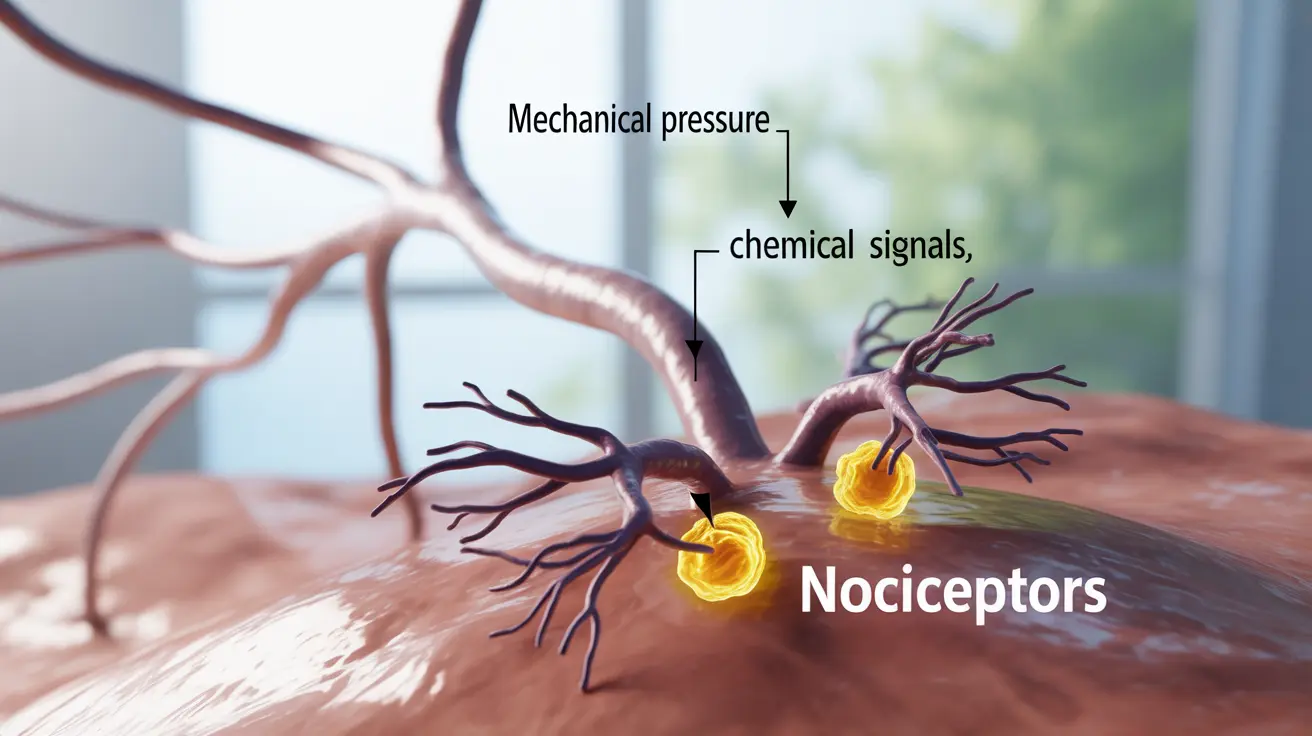Nociceptive pain is the body's natural response to tissue damage or potential injury. This fundamental pain mechanism serves as a crucial warning system, alerting us to harmful stimuli and helping prevent further damage. Understanding nociceptive pain is essential for proper diagnosis and treatment of various painful conditions.
Unlike other types of pain, nociceptive pain occurs when specialized nerve endings called nociceptors detect tissue damage or potentially harmful situations. These pain receptors can be activated by various stimuli, including mechanical pressure, temperature extremes, or chemical irritants.
Types of Nociceptive Pain
Nociceptive pain typically falls into two main categories:
Somatic Pain
Somatic pain originates from injuries to skin, muscles, bones, joints, and connective tissues. This type of pain is usually well-localized and often described as sharp, aching, or throbbing. Common examples include:
- Bone fractures
- Muscle strains
- Joint inflammation
- Cuts and bruises
- Post-surgical pain
Visceral Pain
Visceral pain affects internal organs and their surrounding tissues. This pain is typically more diffuse and can be harder to locate precisely. It often manifests as:
- Cramping sensations
- Deep aching
- Pressure-like discomfort
- Squeezing sensations
Common Causes and Triggers
Nociceptive pain can result from various conditions and circumstances:
- Acute injuries and trauma
- Inflammatory conditions
- Surgical procedures
- Sports-related injuries
- Arthritis and joint problems
- Internal organ disorders
- Mechanical stress and overuse
Diagnosis and Assessment
Healthcare providers diagnose nociceptive pain through:
- Detailed medical history
- Physical examination
- Description of pain characteristics
- Assessment of pain patterns
- Imaging studies when necessary
- Evaluation of underlying conditions
Treatment Approaches
Medication Options
Several medications can help manage nociceptive pain:
- Over-the-counter pain relievers
- Non-steroidal anti-inflammatory drugs (NSAIDs)
- Prescription pain medications
- Topical treatments
Non-Pharmaceutical Interventions
Many non-medication approaches can be effective:
- Physical therapy
- Exercise and stretching
- Hot and cold therapy
- Massage
- Rest and activity modification
- Occupational therapy
Prevention and Management Strategies
Long-term management of nociceptive pain often requires a comprehensive approach:
- Regular exercise and physical conditioning
- Proper body mechanics
- Stress management techniques
- Lifestyle modifications
- Weight management when applicable
- Regular medical follow-up
Frequently Asked Questions
What are the common causes and symptoms of nociceptive pain?
Nociceptive pain commonly results from tissue damage, inflammation, or injury. Symptoms typically include sharp, aching, or throbbing pain that's well-localized in cases of somatic pain, or deep, cramping sensations in visceral pain. Common causes include injuries, arthritis, and surgical procedures.
How does nociceptive pain differ from neuropathic pain?
Nociceptive pain results from actual or potential tissue damage detected by pain receptors, while neuropathic pain stems from damage or dysfunction in the nervous system itself. Nociceptive pain tends to be more localized and responsive to traditional pain treatments, unlike neuropathic pain which often causes burning or shooting sensations.
What treatments are effective for managing nociceptive pain?
Effective treatments include pain medications (NSAIDs, acetaminophen), physical therapy, exercise, and various non-pharmaceutical interventions like heat/cold therapy and massage. Treatment plans are often tailored to the specific cause and severity of the pain.
Can nociceptive pain become chronic, and how is it treated then?
Yes, nociceptive pain can become chronic, particularly if the underlying condition persists. Chronic cases often require a comprehensive treatment approach combining medications, physical therapy, lifestyle modifications, and sometimes psychological support to manage long-term pain effectively.
What types of injuries or conditions typically cause nociceptive pain?
Common conditions causing nociceptive pain include bone fractures, muscle strains, sports injuries, arthritis, surgical procedures, and internal organ disorders. Both acute injuries and chronic conditions can trigger nociceptive pain responses.




